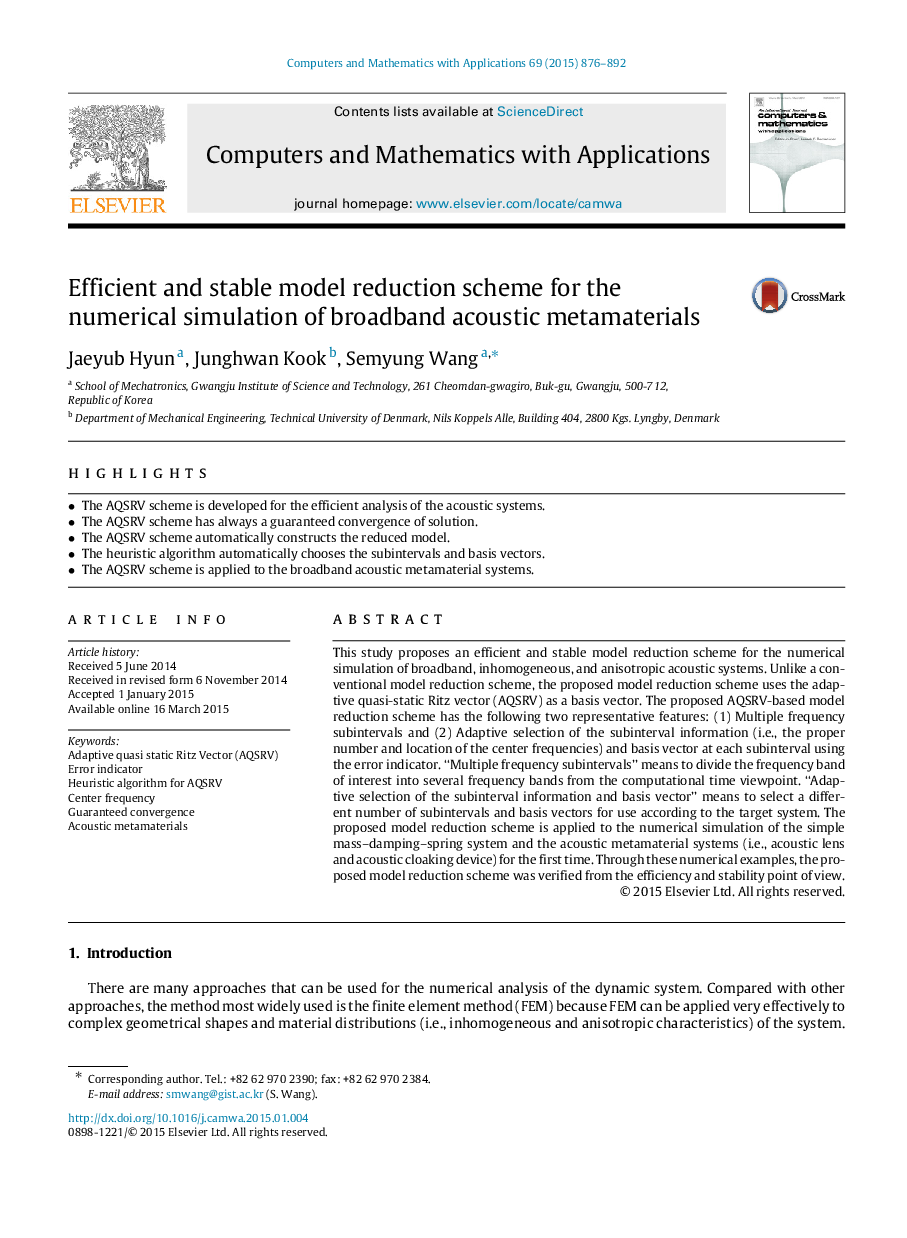| Article ID | Journal | Published Year | Pages | File Type |
|---|---|---|---|---|
| 470948 | Computers & Mathematics with Applications | 2015 | 17 Pages |
•The AQSRV scheme is developed for the efficient analysis of the acoustic systems.•The AQSRV scheme has always a guaranteed convergence of solution.•The AQSRV scheme automatically constructs the reduced model.•The heuristic algorithm automatically chooses the subintervals and basis vectors.•The AQSRV scheme is applied to the broadband acoustic metamaterial systems.
This study proposes an efficient and stable model reduction scheme for the numerical simulation of broadband, inhomogeneous, and anisotropic acoustic systems. Unlike a conventional model reduction scheme, the proposed model reduction scheme uses the adaptive quasi-static Ritz vector (AQSRV) as a basis vector. The proposed AQSRV-based model reduction scheme has the following two representative features: (1) Multiple frequency subintervals and (2) Adaptive selection of the subinterval information (i.e., the proper number and location of the center frequencies) and basis vector at each subinterval using the error indicator. “Multiple frequency subintervals” means to divide the frequency band of interest into several frequency bands from the computational time viewpoint. “Adaptive selection of the subinterval information and basis vector” means to select a different number of subintervals and basis vectors for use according to the target system. The proposed model reduction scheme is applied to the numerical simulation of the simple mass–damping–spring system and the acoustic metamaterial systems (i.e., acoustic lens and acoustic cloaking device) for the first time. Through these numerical examples, the proposed model reduction scheme was verified from the efficiency and stability point of view.
